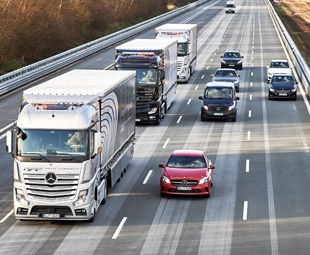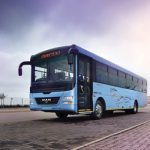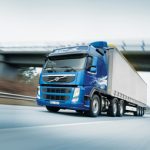Connectivity; the new buzzword in transport and logistics

With the launch of Highway Pilot Connect, Daimler Trucks has taken the next step in the quest for truly autonomous driving – allowing numerous vehicles to reap the rewards of travelling in convoy. GAVIN MYERS previews the technology.
Where would we be without communication? With its ability to transmit data at lightning speed, modern technology has opened countless doors never before imagined; allowing a plethora of connected devices to communicate with one another. There’s no denying that today’s world relies on this connectivity.
And now, trucks are truly connected by being able to communicate with each other and the surrounding infrastructure. At an international reveal in Düsseldorf, Germany, three connected Actros 1845 trucks made their way to the venue in convoy on the country’s A52 autobahn – drivers’ hands off their wheels and feet off their pedals.
Daimler Trucks calls this platooning. By introducing vehicle-to-vehicle (V2V) communication to its existing Highway Pilot autonomous driving technology (now approved for use on public roads throughout Germany), the ability to platoon reduces fuel consumption and emissions by up to seven percent (averaged across the vehicles), makes better use of infrastructure and increases road safety.
It’s something quite incredible to witness: the trucks close up to a distance of 15 m apart at the legal 80 km/h, while an eight-inch, in-dash monitor relays images of the road ahead from the lead truck, as well as other pertinent information such as each truck’s position.
Should a regular road user need to intersect the platoon – to take an off-ramp, for example – the platoon will recognise this and create a gap, before closing up again once the vehicle has passed.
If one of the vehicles in the platoon brakes, those following do so as well – with a reaction time of one-tenth of a second, the convoy will travel just 2,2 m before each vehicle initiates an emergency stop.
The connected truck has the ability to communicate with others in a platoon, as well as with the infrastructure supporting it. This vehicle-to-infastructure (V2I) communication means that all these messages and signals from the platoons – as well as other data such as weather data and road conditions – are also sent to external recipients, such as traffic control centres. The idea is for the authorities to respond flexibly, for example by changing the speed limit, or opening up additional lanes.
Other connected road users will also receive this precise route data in real time, with suggestions for alternative routes, so as to make their journeys more efficient.
“We have a vision of the future, where the entire transportation process is entirely seamless. The connected truck becomes the main data node at the centre of the logistics network, creating an information power grid,” says Wolfgang Bernhard, member of the board of management of Daimler AG, responsible for Daimler Trucks & Buses.
This is just to scratch the surface of this technology, though … its full scope of ability, and possibility, being far more detailed. Look out for the full report with the May edition of FOCUS.
Published by
Focus on Transport
focusmagsa




 Big news from FOCUS on Transport + Logist
Big news from FOCUS on Transport + Logist


 !
Starting 1 April, every
!
Starting 1 April, every


 FUSO: Driving the Future of Mobile Healthc
FUSO: Driving the Future of Mobile Healthc



 A brand
A brand




 Wondering about the maximum legal load for a
Wondering about the maximum legal load for a 
 The MAN hTGX powered by a hydrogen combus
The MAN hTGX powered by a hydrogen combus

 Exciting News for South African Operators
Exciting News for South African Operators


